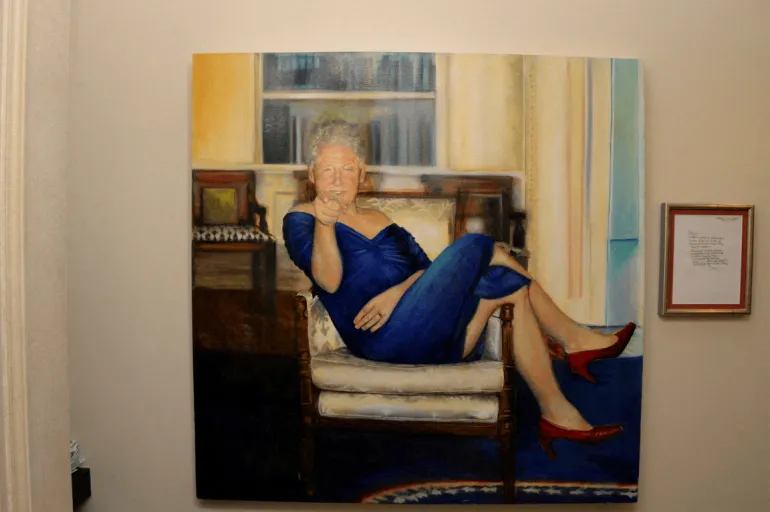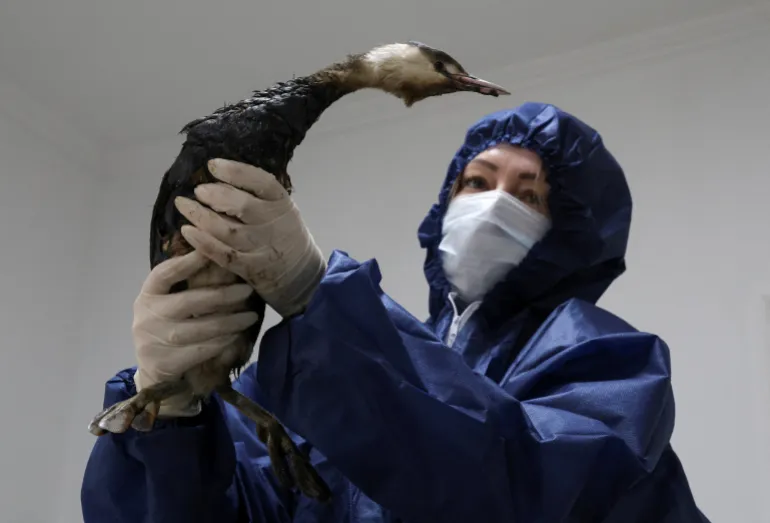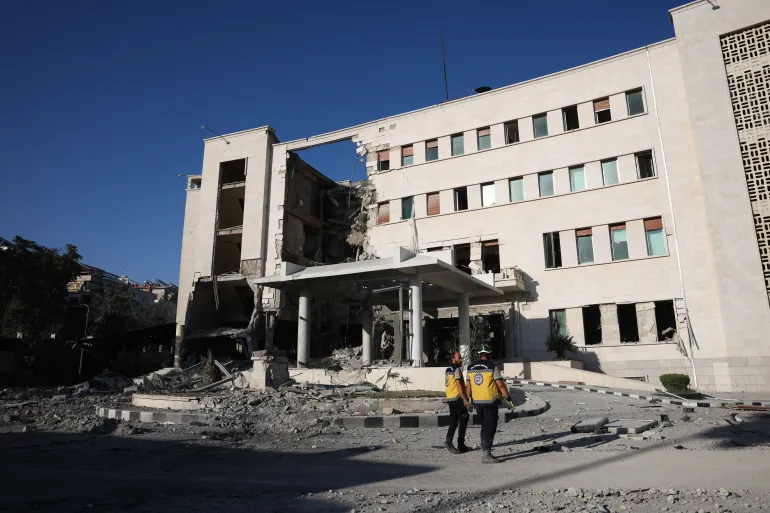Epstein files: Whose names and photos are in the latest document drop? | Explainer News
The United States Department of Justice (DOJ) has released thousands more documents relating to the prosecution of the late sex offender and financier Jeffrey Epstein, including photographs of prominent figures he spent time with. But campaigners behind the Epstein Files Transparency Act, which compelled the Justice Department on Friday to release all files still sealed, say far too much information in them has been redacted.
Furthermore, according to US media, at least 16 of the files – which they said were disclosed late – have since “disappeared” from the website where they were released. The deleted files included a photograph showing President Donald Trump.
The Epstein Files Transparency Act, which Trump signed into law after it passed through Congress in November, required the government to release all remaining unclassified material in its possession relating to Epstein’s and his girlfriend Ghislaine Maxwell’s sex trafficking cases. Maxwell is currently serving 20 years in prison for her part in the scandal.
Despite heavy redaction of many of the documents, which has angered Democrats and some Republicans alike, there is some new information about the powerful people who associated with the disgraced late financier.
The Justice Department said it will release more documents in the coming weeks.
Here’s what we know about what’s been released so far:

What’s new in this tranche of Epstein files?
This is just the latest release of documents relating to the prosecution of Epstein, who died by suicide in a New York jail in 2019. The first tranche of about 950 pages of court documents was made public in early 2024.
One document released this time around confirms that the Federal Bureau of Investigation (FBI) was tipped off about the convicted sex offender’s crimes nearly a decade before he was first arrested.
In September 1996, Epstein survivor Maria Farmer complained to the FBI that the late financier was involved in child sex abuse. Farmer said officials failed to take steps to investigate.
While the name of the complainant is redacted in the document relating to this complaint to the FBI, Farmer has confirmed it was made by her.
Now in her 50s, Farmer said in a statement via her lawyers after the release on Friday that she feels “redeemed” and this was “one of the best days of my life”.
“I want everyone to know that I am shedding tears of joy for myself but also tears of sorrow for all the other victims that the FBI failed,” she said.
Newly released transcripts of grand jury proceedings also include testimony from FBI agents who described interviews that they conducted with girls and young women describing their experiences of being paid to perform sex acts for Epstein. The youngest interviewee was 14, according to local media.
One woman, then aged 21, told a grand jury that Epstein had hired her when she was 16 to perform a sexual massage and that she had gone on to recruit other girls to do the same.
“For every girl that I brought to the table, he would give me $200,” she said.
They were mostly people she knew from high school, she said, adding that she told them that if they were under age, “just lie about it and tell him that you are 18.”
Much of the material published had already been circulating in the public domain after years of court action and investigations.
However, many of the new photos – some of them heavily blacked out – feature well-known public figures.

Who features in the newly released photos?
Among the documents released on Friday are photographs in a folder labelled “DOJ Disclosures”. Most of the photographs were seized by the FBI during various searches of Epstein’s homes in New York City and the US Virgin Islands.
New photos show the musicians Mick Jagger, Michael Jackson and Diana Ross in photographs with Epstein and at times with other people whose faces have been blacked out.
In one image, Jagger can be seen sitting between Epstein and former US President Bill Clinton. Popstar Jackson is also pictured standing next to Clinton and posing for a photo with Epstein in front of a painting in another.

Other famous men featured in the newly released photos include the actor Kevin Spacey, comedian Chris Tucker, billionaire Richard Branson, former UK ambassador to the US Peter Mandelson and Andrew Mountbatten-Windsor – formerly known as Britain’s Prince Andrew – and his former wife, Sarah Ferguson.
In one black and white image, Andrew can be seen lying across the laps of five people whose faces have all been blacked out while Maxwell stands behind them.
The Justice Department did not include any details about the contents or context of the photos.

Virginia Giuffre, who was one of Epstein’s most prominent accusers and who died by suicide in April aged 41, accused Mountbatten-Windsor of sexual abuse when she was 17. He settled a lawsuit with her in 2022 but continued to deny the allegation.
Another prominent figure among the photos is Clinton. One photo shows him in a swimming pool with Maxwell and another person whose face has been blacked out. Another photo shows the former US president in a hot tub with a woman whose face is also redacted.

While Clinton has never been accused of any wrongdoing in connection with Epstein’s crimes, his spokesperson said the White House was using him as a scapegoat.
“This is about shielding themselves from what comes next, or from what they’ll try and hide forever. So they can release as many grainy 20-plus-year-old photos as they want, but this isn’t about Bill Clinton. Never has, never will be,” the spokesperson said in a statement.
Clinton in the past has said he cut ties with Epstein before the late financier pleaded guilty to solicitation of a minor in Florida.

Does Trump appear in the Epstein files?
Trump hardly appears in the files at all. The few photos that do feature him are ones that have been circulating in the public domain for decades.
According to one court document released on Friday, Epstein was alleged to have taken a 14-year-old girl to Trump’s Mar-a-Lago resort in Florida and to have introduced her to the president.
While introducing her, Epstein elbowed Trump, asking him – referring to the teenager: “This is a good one, right?” Trump smiled and nodded in agreement, said the document from a case against Epstein’s estate and Maxwell in 2020.
In the court filing, the unnamed plaintiff herself makes no specific accusation against Trump.
In response to media requests for comment about this court document, White House spokeswoman Abigail Jackson said the Trump administration was “the most transparent in history” and by “recently calling for further investigations into Epstein’s Democrat friends, the Trump Administration has done more for the victims than Democrats ever have,” she added.

Have some of the files disappeared since they were published on Friday?
Apparently, yes. One image, originally labelled File 468, which showed the inside of a desk drawer, included a photograph of Trump alongside Epstein, US first lady Melania Trump and Maxwell.
Other missing photos were images of paintings depicting nude women and one showing a series of photographs on a cupboard and in drawers.
On Saturday, The Associated Press news agency reported that at least 16 files published on Friday had disappeared from the Justice Department’s webpage.
The department has not provided any explanation or statement to the public about this but said in a post on X that “photos and other materials will continue being reviewed and redacted consistent with the law in an abundance of caution as we receive additional information.”
Democrats on the Oversight Committee in the US House of Representatives also released 68 photos, drawn from the 95,000 photos and files the Oversight Committee has so far received from the Epstein estate.
Democrats in the committee said the images, which they released on Thursday, “were selected to provide the public with transparency into a representative sample of the photos” and “to provide insights into Epstein’s network and his extremely disturbing activities”.
Following the Justice Department’s release on Friday, the committee’s Democratic members questioned in a post on X why the image featuring a photo of Trump, a Republican, was missing, stating: “What else is being covered up? We need transparency for the American public.”

Why has so much been redacted?
Among the thousands of documents published on Friday, at least 550 pages were reportedly fully redacted.
One 119-page document labelled “Grand Jury-NY” is completely redacted as is a set of three consecutive documents totalling 255 pages. Each page is fully blacked out.
Campaigners behind the Epstein Files Transparency Act said they had hoped to obtain more information about how the sex offender had been able to avoid serious federal charges for so many years.
However, many crucial FBI interviews with Epstein’s accusers and internal Justice Department memos on charging decisions are unreadable.
Todd Blanche, the deputy attorney general, sent a six-page letter to members of Congress laying out the redaction process, noting that the law mandates that the department omit or redact any references to victims and files that could jeopardise pending investigations or litigation.
Blanche explained that he had, therefore, instructed attorneys to redact or withhold material that contained personally identifiable information about victims; depicted or contained child sexual abuse materials; would jeopardise an active investigation or prosecution; or contained classified national defence or foreign policy information.
Without specifying which, Blanche added that in some instances, the department had withheld or redacted information covered by deliberative-process privilege, work-product privilege and attorney-client privilege.

When will the remaining files be released?
The Justice Department has said the publication of thousands more documents concerning investigations into Epstein will be released in the coming days as the year-end holidays approach.
The department missed its original Friday deadline to release all the information it had on Epstein in violation of the law signed by Trump in November ordering a complete release within 30 days.
After the drop on Friday, the department published two much smaller tranches on Saturday, which went beyond the initial redactions and featured identities of prosecutors, FBI case agents and other law enforcement personnel who appeared before two federal grand juries in New York state.
Several US lawmakers expressed anger about the White House’s failure to produce all the documents required under the law within the time limit.
Representatives Ro Khanna, a Democrat, and Thomas Massie, a Republican – the duo who introduced the petition that eventually led to the passing of the Epstein Files Transparency Act – strongly criticised the partial release on social media.
Massie wrote that it “grossly fails to comply with both the spirit and the letter of the law”.
Khanna called the release so far “disappointing” and added: “We’re going to push for the actual documents.”
Senate Democratic leader Chuck Schumer accused the Trump administration of being “hell-bent on hiding the truth” and reiterated that the failure to release all the Epstein documents by Friday’s deadline amounts to “breaking the law”.
Meanwhile, officials from the Trump administration have been publicising the photographs featuring former Democratic President Clinton and hailing the current government as “the most transparent in history”.
Can campaigners take further steps to obtain more of the documents?
In a statement, Schumer said Senate Democrats are working “closely with attorneys for the victims of Jeffrey Epstein and with outside legal experts to assess what documents are being withheld and what is being covered up by [US Attorney General] Pam Bondi”.
Representatives Robert Garcia and Jamie Raskin, the ranking Democrats on the House Oversight and Judiciary committees, said they are examining “all legal options” after “the Department of Justice is now making clear it intends to defy Congress itself.”
“Donald Trump and the Department of Justice are now violating federal law as they continue covering up the facts and the evidence about Jeffrey Epstein’s decades-long, billion-dollar, international sex trafficking ring,” Garcia and Raskin said in a statement.
Senator Ron Wyden, another top Democrat on the Senate Finance Committee who investigated Epstein’s financial ties, said on social media that the failure to release all the files was “a continuation of this administration’s coverup on behalf of a bunch of pedophiles and sex traffickers”.
The Associated Press reported that if Democratic lawmakers so choose, they could go to court to force the Justice Department to comply with the law. However, that would likely be a lengthy process.
Separately, the House Oversight Committee has issued a subpoena for the Epstein files, which could give Congress another avenue to force the release of more information to the committee. But that would require Republicans to join them in contempt-of-Congress proceedings against a Republican administration.














